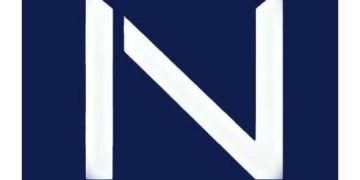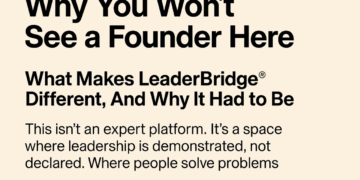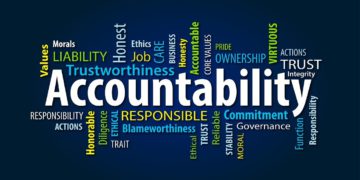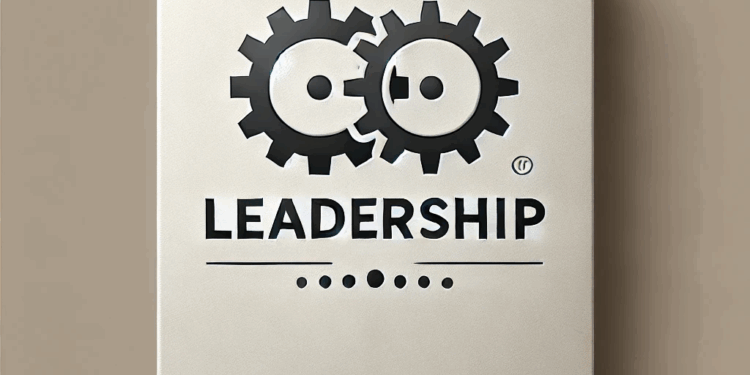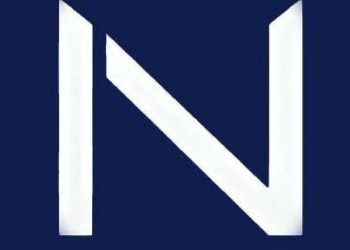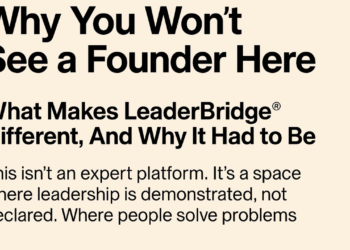Since 2017, I’ve been sharing my thoughts on leadership development through blogs and articles. While much of my career as an industrial-organizational psychologist has been spent advising senior leaders, it’s been these past few years of writing and reflecting that have allowed me to clarify my deeper views on leadership development. This clarity ultimately led to the creation of leadership.NET, a platform designed to provide real-time, practical support for new and emerging leaders.
Interestingly, while working with senior leaders, I often observed that they could be categorized into two broad buckets: those who were more conceptual and process-focused versus those who were concrete and execution-focused. I realized that new and emerging leaders, though they too fall into these categories, often first need help building good habits around concrete, immediate execution. That’s why I decided to launch leadership.NET with a focus on helping new and emerging leaders tackle the day-to-day leadership challenges right in front of them.
This article is the next step in a series following my November 2024 articles, “How Emerging Leaders Can Accelerate Development” and “From Theory to Practice: How the DOER-R Framework Builds Daily Leadership Habits”. It extends the conversation by exploring how to practically apply the DOER-R framework (Define, Own, Enlist, Resolve, Reinforce) within a real-world leadership challenge. While this framework has been designed as the foundation of leadership.NET, the insights shared here can be applied by any leader at any level.
Why Some Elements of This Offering Feel “Disruptive”
At leadership.NET, we’ve structured the platform to feel a bit different. What some might call “disruptive” (though perhaps that’s too strong a term). For example, while all users complete an intake and verification process, we intentionally avoid collecting personal information. Participants are anonymous, meaning they collaborate without knowing names, locations, or other demographic details unless they decide to share them voluntarily. Even when users choose to engage through audio or video, anonymity can be preserved since personal details are not required or shared by default.
This anonymity is core to the platform’s design. It allows users to focus on the substance of collaboration rather than on social validation or comparisons. It also removes the typical “performance pressure” of needing to impress others. Instead, the goal is simple: to help each other improve and to grow as leaders.
Additionally, although it wouldn’t be difficult to integrate AI into this platform (e.g., using large language models for generating responses), doing so would miss the point. The real value of leadership.NET lies in the human, real-time interaction between participants. Because participants are anonymous and focused on growth rather than social validation, the incentive to outsource their thinking to AI simply doesn’t exist. Both Leap (the leader initiating the challenge) and Peep (their collaborator) are encouraged to engage deeply with their challenges, ensuring that growth happens organically and authentically.
How the DOER-R Framework Applies Here
While we’ve explained the DOER-R framework in prior articles, a brief recap is helpful: DOER-R stands for Define, Own, Enlist, Resolve, and Reinforce. It’s a flexible, semi-structured process that leaders can use to tackle real-world challenges. Although participants are encouraged to engage with each element of the framework, they can skip or revisit elements as needed. The framework is adaptable to the problem at hand, with the ultimate goal being clarity and actionable solutions.
A Practical Example: Alex and Taylor
Let’s explore how DOER-R works in practice through a challenge initiated by Alex, a newly promoted manager at a tech startup. Alex has made leadership.NET part of their daily habit. Each day, they reflect on their biggest leadership challenge and create a challenge in the platform’s Challenge Bridge to collaborate with a vetted peer (or “Peep”).
On this day, Alex identifies a recurring issue: two team members are at odds over shared responsibilities, causing tension and slowing progress. Alex sets up the challenge by selecting:
- DOER-R Element: Enlist, recognizing that resolving the issue will require collaboration with others.
- Skill: Adapting, understanding that flexibility and responsiveness will be key to navigating the conflict.
The platform matches Alex with Taylor, a vetted peer selected based on skill alignment and past ratings. Both enter the Challenge Bridge to collaborate.
Step 1: Setting Up the Challenge
The first step of the collaboration involved Alex sharing their explanation of the issue and Taylor asking clarifying questions. For instance, Taylor asked:
“Is the conflict due to unclear responsibilities, or are the team members resisting what they’ve been told are their responsibilities?”
This question prompted Alex to rethink their approach and suggested moving to the Define element to clarify the root cause of the problem.
Step 2: Moving Through Elements and Ratings
As they worked through Define, Own, and Resolve, the participants engaged in deep conversations and exchanged actionable ideas. Between each element, the platform prompted optional ratings. For example:
- After Enlist, Alex rated Taylor’s Driving a 4 for their ability to ask clear, actionable questions and Connecting a 5 for their collaborative approach.
- Taylor rated Alex’s Connecting a 4, noting Alex’s openness to feedback.
- Alex rated themself a 3 for Adapting, recognizing they struggled to remain flexible in the conversation.
These ratings are key to the platform’s feedback loop—they provide meaningful insights for both Leap and Peep and are saved to their profiles for future reference. While we’ve shared just a few highlights here, each participant had the opportunity to rate across all six feedback categories: Driving (self and peer), Connecting (self and peer), and the chosen skill focus (self and peer).
Step 3: Applying the Learning at Work
Armed with a clear plan, Alex carried the solution into a team meeting. Using strategies discussed on the Challenge Bridge, Alex clarified team roles, addressed the conflict directly, and invited feedback to ensure buy-in. The result? Both team members aligned on responsibilities, tension eased, and productivity improved.
Step 4: Submitting the Impact Rating
After implementing the plan, Alex returned to leadership.NET to submit the Impact Rating—a simple 5-point scale measuring how effectively the challenge helped resolve their real-world issue. Alex rated the session a 5, reflecting the success of applying the learning at work. Taylor was notified of the Impact Rating and received credit for their participation, which was added to their performance profile.
Why leadership.NET Works for New and Emerging Leaders
Here’s why leadership.NET is designed to be a game-changer for new and emerging leaders:
- Real-Time Problem Solving: Tackle current challenges with actionable insights.
- Anonymity with Trust: Participants remain anonymous but vetted, creating a safe and focused environment.
- Actionable Feedback Loops: Ratings provide meaningful, real-time insights.
- Flexible Framework: DOER-R adapts to each challenge.
- Affordable Access: Leadership development at a fraction of the cost of coaching programs.
By combining structure with flexibility, leadership.NET creates an environment where new and emerging leaders can develop practical habits, solve real problems, and grow through collaborative learning.
References to the Series
For more on the evolution of leadership.NET, check out these articles:
- How to Find Safe Sounding Boards Outside of Your Company (Forbes) Exploring the importance of external peer support for leadership development. https://www.forbes.com/councils/forbescoachescouncil/2019/07/29/how-to-find-safe-sounding-boards-outside-of-your-company/
- Getting the Most Out of 360-Degree Reviews (Harvard Business Review) A deep dive into structured feedback and its role in leadership growth. https://hbr.org/2019/11/getting-the-most-out-of-360-degree-reviews
- How Emerging Leaders Can Accelerate Development (LinkedIn) Discussing key strategies for leadership growth and practical application. https://www.linkedin.com/pulse/how-emerging-leaders-can-accelerate-development-john-behr-y4ioc?utm_source=share&utm_medium=member_ios&utm_campaign=share_via
- From Theory to Practice: How the DOER-R Framework Builds Daily Leadership Habits (LinkedIn) Bridging leadership concepts with hands-on, real-world application. https://www.linkedin.com/pulse/from-theory-practice-how-doer-r-framework-builds-daily-john-behr-kwurc?utm_source=share&utm_medium=member_ios&utm_campaign=share_via




